VOL.45, NO. 4
Audiences, Literacies and Adaptations
Laurence Raw
In 2007, Thomas Leitch’s seminal work Film Adaptation and its Discontents represented the notion of adaptation as a creative act; an ability to decode the relationship between source and target texts through “active literacy,” a transformative act of perception requiring both creative energy as well as an appreciation of how texts are “produced. consumed, canonized, transformed, resisted, and denied” in a variety of contexts (17-18). By concentrating on how target texts select, emphasize, and transform source-texts, audiences might be inspired to undertake similar creative experiments on their own. A decade later Leitch’s ideas were challenged by theories of digital literacy suggesting that the interpretive process was far more complicated in the information age. This process comprised four elements: information literacy (the ability to gather information, evaluate and communicate it to others); visual literacy (enjoying and deconstructing visual cultures); digital literacy (the ability to navigate in hypo-textual and convergent media; and multimodal literacy (an intercontextual approach to textual production) (Livingstone et. al. 213). Acquiring such literacies requires substantial content analysis as well as an understanding of the social, technical, and cultural milieus that a user inhabits (Livingstone et. al. 214). A variety of communicative strategies – blogging, online groups, social media exchanges – assume equal importance as printed texts. The act of writing has been superseded by an emphasis on digital media to communicate individual artistic interests.
The relationship between active and digital literacies is not that straightforward: to assume that active literacy is somehow outmoded in the post-Web 2.0 world neglects the transformative potential of traditional communicative modes such as face-to-face exchanges. It is also important to recognize the role played by Internet Service Providers and social media companies in shaping our exchanges. Do we express ourselves freely online, or are we acting within preset limits, or both? This issue reminds us off the arguments set forth in Simone Murray’s The Adaptation Industry (2012) where she argues forcefully for a model of adaptation studies and audience response shaped by institutions, stake-holders and decision-makers (66).
I should like to reflect on the relationship between active and digital literacies through a case-study of Turkish film and television history over the past six decades. I begin with an analysis of Yeşilçam, a local industry reminiscent of the old B-Movie studios during Hollywood’s classical era, where small companies churned out a succession of cinematic reboots on low budgets. These films promoted a culture-specific construction of active literacy based on collective rather than individual values through a combination of melodrama and message as they emphasized the importance of nationalism, the family and heterosexual marriage as the foundation of a stable society.1 By the late nineties the style of filmmaking had changed forever, with big-budget diziler (serials) dominating television screens, appealing to viewers’ social aspirations with their elaborate sets and costumes – a testament to the new spirit of capitalist enterprise dominating the Republic. The industry took note of the enduring popularity of Yeşilçam’s moral lessons (both inside and outside the country) that guaranteed high ratings, as well as proving acceptable to the censors who kept a close eye on cinema and television output.
With the rapid advance in online communication technologies, viewers discovered new forms of active literacy through digital literacies, especially when the serials were broadcast online and subsequently made available for download from YouTube. The series’ appeal extended far beyond the Republic into the Middle East and Asia, creating new transnational communities. This was a powerful development, which, while encouraging individual self-expression, was not without its critics, several of whom argued that viewers had become victims of rampant commercialism that might affect their beliefs in family and national stability. By drawing on several audience surveys published in the Republic and elsewhere, I argue that such fears were unfounded: most viewers were introduced to new constructions of modernity based on cross-cultural comparisons (Yanardağağoğlu and Karam 561-79). Based on the evidence of the case-study, I conclude with a series of recommendations as to how the issue of adaptation and audiences over time and space might be effectively approached.
As a prelude to the case-study, it is important to realize that the act of adaptation (uygulamalar) has a specific cultural connotation in the Republic. After its creation in 1923 the government established a Translation Bureau (Tercüme Bürosu) with the specific aim of rendering Western classic literature into Turkish. Translators were requested to observe the principle of equivalence in the belief that this was the best method of rendering the source-text’s meaning to local audiences. Such texts acquired the status of “official” material intended for schools and universities. The Translation Bureau ceased to operate after the mid-fifties, but its influence persists: the verb “to translate” (çevirmek) chiefly refers to government or legally-inspired translations, or translations produced for so-called “high” cultural purposes (academic work in Departments of Translation, or translations of novels past and present issued by major commercial publishers). The main aim consists of finding the closest possible verbal equivalent to the terms used in the source-text, so that readers can appreciate what they perceive as the author’s intention. To adapt (uygulamak) implies a much freer approach to translation, where source-texts are localized in terms of content and form in a deliberate attempt to appeal to popular rather than academic audiences. Metin Erksan’s film Kadın Hamlet [Female Hamlet] (1976) is a good example, as Shakespeare’s classic is transformed into a feminist melodrama for local star Fatma Girik. The dialogue is resolutely contemporary, while the entire story has been relocated to mid-seventies İstanbul. Such films perpetuated a tradition dating back to the postwar era when İstanbul-based publishing houses issued their own adaptations of classics such as Sherlock Holmes and Arsène Lupin, with the action centered mostly in and around İstanbul. The source-text’s author seldom appeared on the covers of the title-pages, while the plots were simplified or rewritten completely. Published in garish covers modeled on American pulp fiction, these adaptations (what Şehnaz Cağlar Gürçağlar terms pseudo-translations or translations on the margins (55)) proved so financially lucrative that they provided valuable support for professional novelists such as Kemal Tahir (Gürçağlar 228-30).2 They rejected any suggestion of equivalence; designed to be read in public as well as consumed in private, they were unashamedly pitched at popular audiences. Quoting Henry Jenkins, Janet Staiger suggests that the pleasure experienced in such films helps to establish “an alternative social community,” with specific topics of conversation – commentary on the film (what they find pleasurable or satisfying), mutual self-disclosure (revealing why they find particular films so attractive), conversion stories (where individuals admit how and why they have been transformed by films), and personal identifications (with a star or other creative personnel) (72).
Yeşilçam directors understood the power of such communities to enhance the film experience. They churned out films with dizzying rapidity – often on 3-4 day schedules – and distributed them countrywide soon afterwards (see Figure 1).
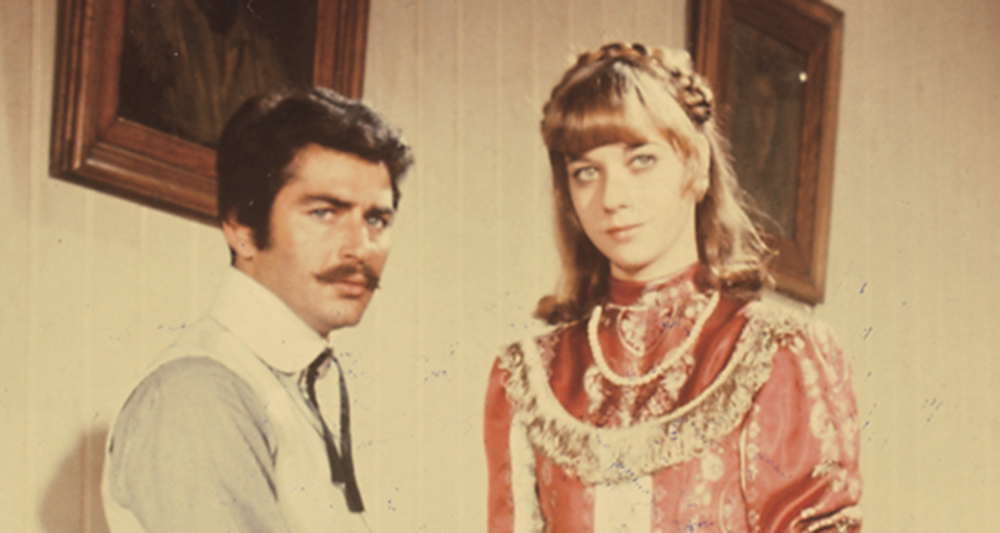
Plots were endlessly recycled, largely involving family quarrels over marriage, class-difference and career, or the eternal struggle between good and evil. The settings remained constant – either the nation’s rural heartland or İstanbul’s rapidly developing suburban landscape, allowing for pointed social commentary on the country’s economic progress and its effect on family values. Audiences knew what to expect, and flocked to the box-office in the belief that they were witnessing their local communities depicted on screen. The personal and the political were inextricable. Yeşilçam manufactured its own stars – Ayhan Işık, Turkân Şoray – who hailed from ordinary backgrounds and played virtually identical roles from film to film. Işık was the good guy victimized by bureaucracies; Şoray was the heroine struggling to maintain her honor in a patriarchal world (Dönmez-Colin 351-4) (see Figure 2).
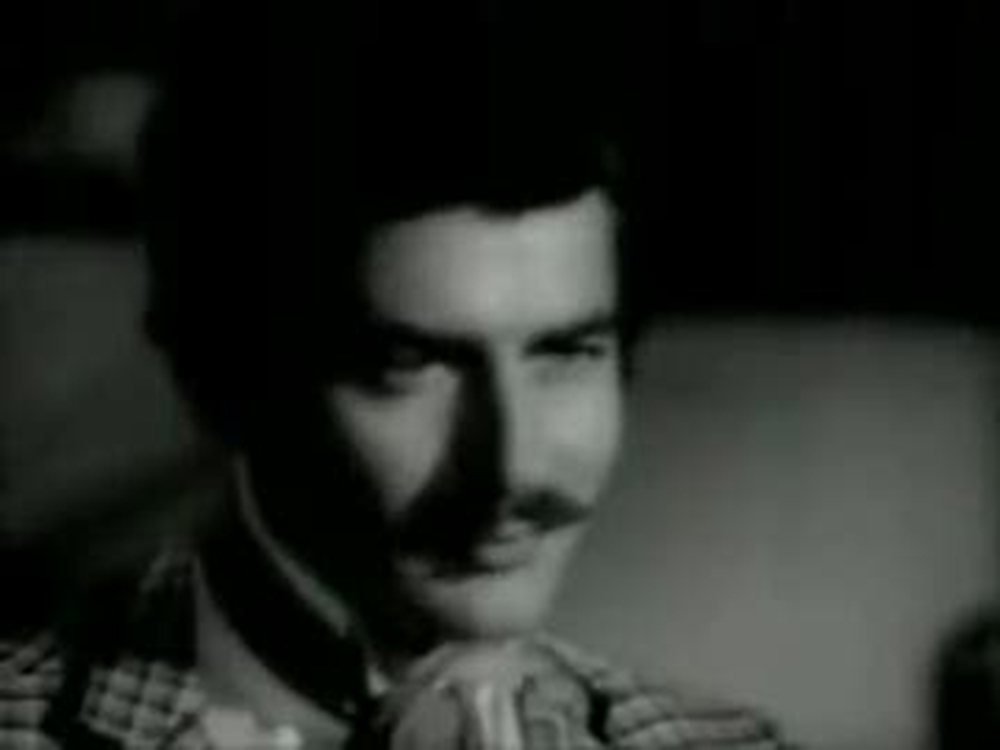
They were not represented as cinematic gods and goddesses (even though Şoray acquired the soubriquet sultana as she negotiated total control over her choice of roles); rather they spent much of their off-screen time touring rural areas and making personal appearances in small villages. Audiences embraced them as one of their own, sharing life’s struggles. Şoray commented in 2010: “we should know what is happening in the environment, as women we should be sensitive to the audience’s feelings” (qtd. in Raw, “The Many” 271) (see Figure 3).
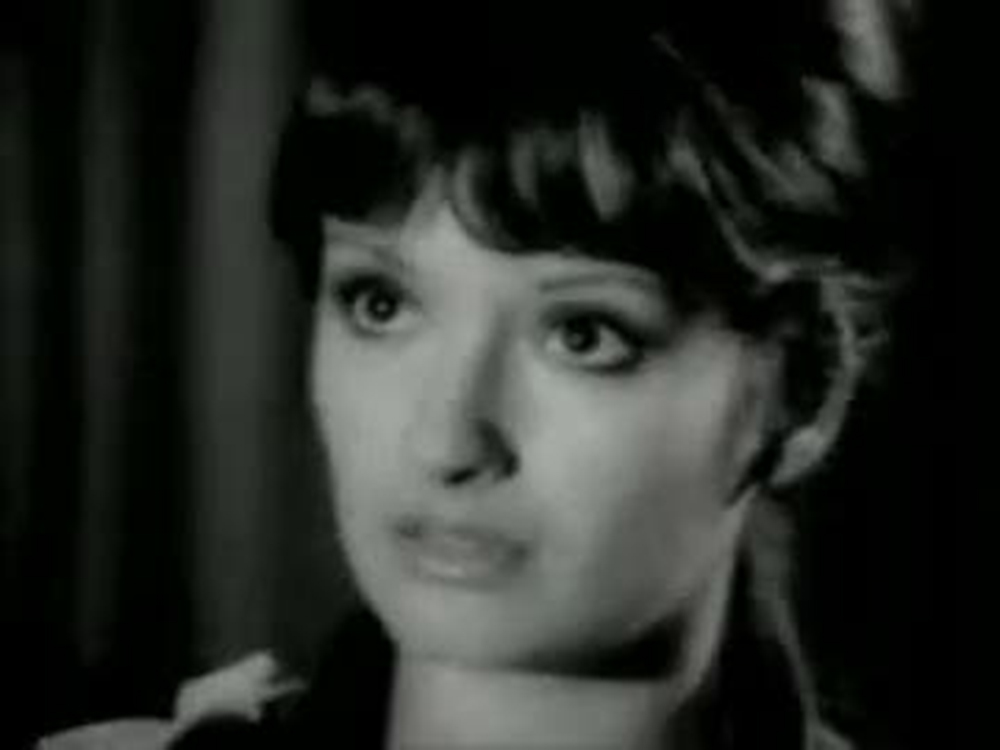
Regrettably, no systematic research into Yeşilçam’s audiences has hitherto appeared. The best available evidence has been assembled by Dilek Kaya’s doctoral thesis, that uses fan letters published in Sinema and Perde (two magazines from the Sixties and Seventies) to argue that the premiere of any Yeşilçam in town or village was treated as “an event” designed to promote reflection on viewers’ lives. They participated actively in the screening by talking among themselves, and emerged from theaters with a renewed understanding of marriage, love, and family (Kaya 27). Such knowledge is described by Staiger as “recognition talk,” the kind of knowledge that any true fan would know, creating a system of marking who does and does not know who does and does not belong to the community or establishing degrees of fan knowledge” (72). In Yeşilçam’s case, the “recognition talk” about the stars, their lives, and their impact on audiences was common to entire rural communities.
Writers took advantage of this “recognition talk” to rework familiar stories deliberately directed at their core audience. T. E. Lawrence’s Seven Pillars of Wisdom (1922) formed the basis for İngiliz Kemal Lavrens’e Karşı (English Kemal against Lawrence) (1952), an historical spy-thriller in which the eponymous İngiliz Kemal (Ayhan Işık) takes on Lawrence (Muzaffer Tema) and expels him from the Republic, thereby paving the way for Mustafa Kemal Atatürk to assume power (Raw, “T. E. Lawrence” 252-63). Other dramas undergoing similar adaptive processes included Goldfinger (1964) that became Altın Cocuk (The Golden Child) (1966); and Bonnie and Clyde (1967), rebooted as Cemo ile Cemile (Cemo with Cemile) (1971). Among the love-stories given the Yeşilçam treatment were the Billy Wilder films Sabrina (1954) that became Şoforın Kızı (The Driver’s Daughter) (1965); and Some Like It Hot (1959), transformed into Çapkın Kızlar (Female Rascals) (1975). The Yeşilçam films are best described as reboots rather than remakes (Perkins and Verevis 1). They make no acknowledgement of their sources, while the plots, characters and situations have been relocated in contemporary İstanbul. In a context with lax copyright laws, such strategies were the norm rather than the exception: what mattered was that the screenplays should reinforce a sense of social stability by endorsing marriage and the family. The famous ending to Some Like It Hot involving Jack Lemmon in drag turning down a proposal from Osgood Perkins (Joe E. Brown) has been erased altogether.
Iain Robert Smith describes such adaptations as examples of “cultural hybridization,” through which cultures can evolve (3). They construct two narratives, both designed to stimulate feelings of collective security. The first, as Iain Smith suggests while discussing the Turkish reboot of Star Trek (Turist Ömer Uzay Yolunda [Ömer the Tourist in Star Trek] (1973)), was that Yeşilçam products initiated a cultural dialogue between the Republic and the United States at a time of greater international cooperation between the two countries (Omer12). The second celebrated Yeşilçam’s achievement in overcoming potential obstacles – of copyright, for instance – to produce blockbusters of their own. It didn’t matter if Çapkın Kızlar’s narrative bore only passing resemblances to Some Like It Hot; what mattered was that the local audiences believed in it, thereby satisfying “a local, inner point of view that wants reminding. Culture […} is always local, always particular, however universal its applications […] [the product] cannot be effective when it is seen as incongruous with the local culture” (Bruner 145). Viewers could discover something about themselves and their potential for active literacy - the capacity to engage in creative practices for themselves.
By the eighties, Yeşilcam as an industry entered a terminal decline. Sex films were the only profitable genre in the theater; hence, the producers allowed their back catalogs to be aired on TRT, the state broadcasting service. They were usually broadcast in the afternoons, sharing the schedules with Brazilian or American soaps such as The Young and the Restless. A survey conducted in the central Anatolian city of Eskişehir among rural homemakers yielded a significant shift in popular attitudes (Aksoy and Robins 123-47). Positive attributes such as patriotism and creative energy (promoting active literacy among filmgoers), as well as recognition talk among communities had been supplanted by unwilling acceptance of the social status quo with women accepting their subordinate roles in the family unit. This change had little to do with the content of the films or the serials: economic hardship had forced people to tighten their belts and concentrate on the realities of day-to-day living. In this kind of environment, the optimism generated by Yeşilçam reboots had been replaced by an unthinking acceptance of “banal transnationalism” – in other words, watching imported films and serials simply to pass the time until dinner had to be prepared, rather than reflecting on the content as a representation of the viewers’ lives (Aksoy and Robins 123). In the aftermath of the military takeover of 1980, the perceived destiny of the Republic had shifted significantly. It was no longer a country that could look forward to a bright future; the Eskişehir homemakers’ responses hinted at a fear of male domination, where female voices were suppressed and families broken apart. The published surveys of audiences at that time revealed audiences trying to avoid “historical and political engagement […] in […] social relations […] constituted in and through the media” (O’Neill et. al. 158). As the Eskişehir women believed that they could make little contribution to their society’s future, they lost interest in Yeşilçam films.
Within two decades, the Turkish mediascape had changed out of all recognition. Yeşilçam had been superseded by more diverse filmmaking concerns, with big-budget films competing for attention with smaller independent products funded by local businesses as well as Eurimages. The government funded TRT (Turkish Radio and Television) had lost its monopoly of the airwaves, and now faced significant challenges from a clutch of private channels linked to major media conglomerates (Doğan, Çinar Holding, Çukurova Group), with interests in print, online as well as visual media. Bilge Yeşil comments:
[By 2006] the media moguls [were] hoping to strengthen their existing positions [….] [with} business tycoons eager to enter the media field. At stake was not only the ownership of major newspapers and television and radio stations; the prospect of political and economic influence in Ankara was on the line as well (89).
With the concomitant growth in transnational capitalism (promoted by the government’s liberalization of trade laws in the Nineties) establishing new markets, the media companies stood to make huge profits: Turkish film and television was big business.
Freely adapted from a best-selling romantic novel of 1899 by Hasan Ziya Uşaklıgil, Aşk-i-Memnu (Forbidden Love) received its first broadcast on TRT in 1975 with Yeşilçam stalwarts Müjde Ar and Şukran Güngör in the leading roles. The novel was rebooted into a weekly serial set in contemporary İstanbul that ran for seventy-nine episodes over three seasons on Kanal D (part of the Doğan conglomerate) from 2008-11. Stylistically speaking, it was highly reminiscent of primetime serials such as Dallas that dominated American television in the eighties and nineties (see Figure 4).
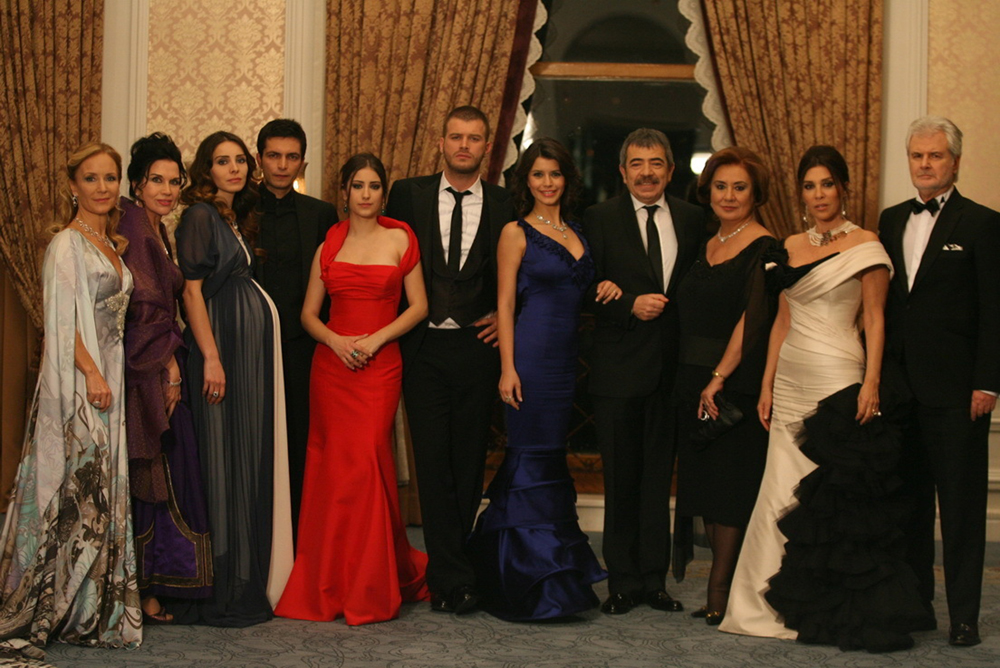
Ien Ang’s classic account identifies familiarity as one of its principal pleasures – although set in the affluent world of a Texas ranch, viewers remain aware of its conventions, including a belief in the continuity of time, both linear and irreversible. Each episode ends with a cliff-hanger, customarily psychological rather than physical, and during the week until the next episode it is implicitly assumed that the characters followed an “unrecorded existence” (27). The next episode explains, often in meticulous detail, how the cliff-hanger resolves itself. Unlike daytime serials such as The Young and the Restless, Dallas is “long-winded,” with “the promise of endlessness itself […] [proving] a source of pleasure” (29). Repetition becomes an essential element of the narrative. Thematic unity is maintained by having a group of actors of varying ages in leading roles: sometimes an episode concentrates on one of them, but within a community framework easily identifiable to viewers.
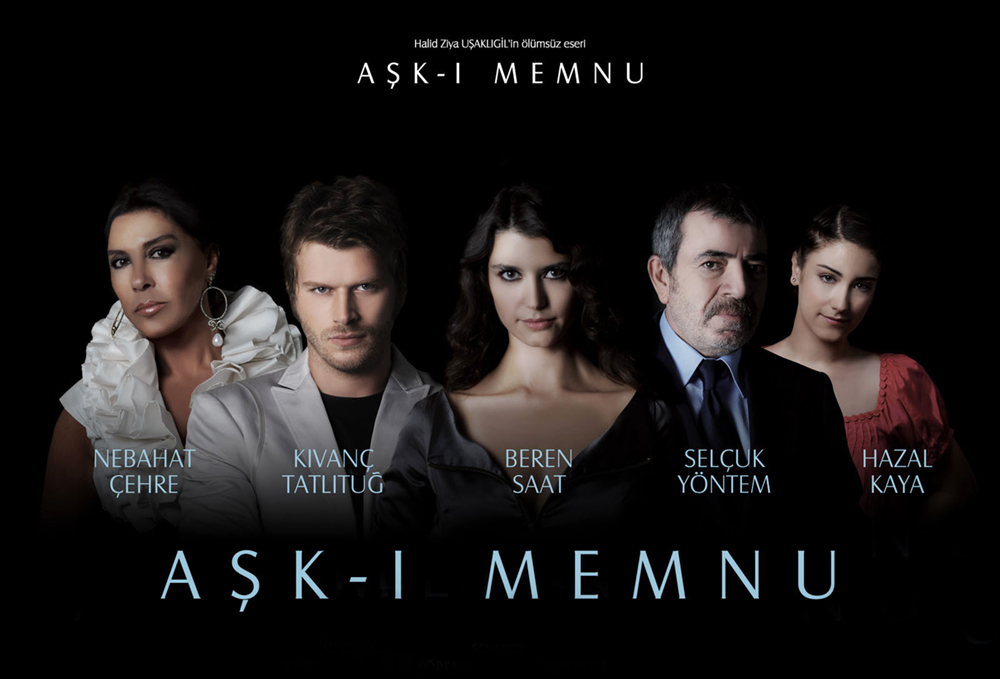
The basic themes center around marriage, family, power, relationships, and the complicated relationships between private and personal lives, magnified into “grotesque shapes” dominated by conflict and catastrophe (29).
What differentiates Aşk-i-Memnu and other serials from Dallas is that the action unfolds within a highly nostalgic formal structure recalling Yeşilçam’s golden age with repeated shot/reverse sequences, zooming close-ups accompanied by melodramatic music and dialogic exchanges taking place in confined spaces – a living-room, a balcony, an office, or the front seat of a car (see Figure 6).3

Dramatic moments are announced by close-ups on individual characters’ expressions. The nostalgic atmosphere has been reinforced thematically: Aşk-i-Memnu reinforces the importance of the nuclear family structure through group sequences taking place at the dining-table, while emphasizing the undesirability of adultery or (even worse) divorce. While individuals are free to fall in love with whomever they wish, they should not forget their social responsibilities; if they do, then they are invariably ostracized, and spend much of the subsequent episodes reacquainting themselves with community values.
But Aşk-i-Memnu is not obsessively preoccupied with the past. If we compare the recent adaptation with the TRT version of 1973, we soon understand how much has changed in the Turkish media landscape over three decades. Halit Refiğ’s version was largely character-driven through repeated use of shot/reverse shot sequences with faux-Ottoman costumes. The recent version focuses on the nouveau riche interiors stuffed with designer furniture and peopled by fashionably attired characters (see Figure 7).
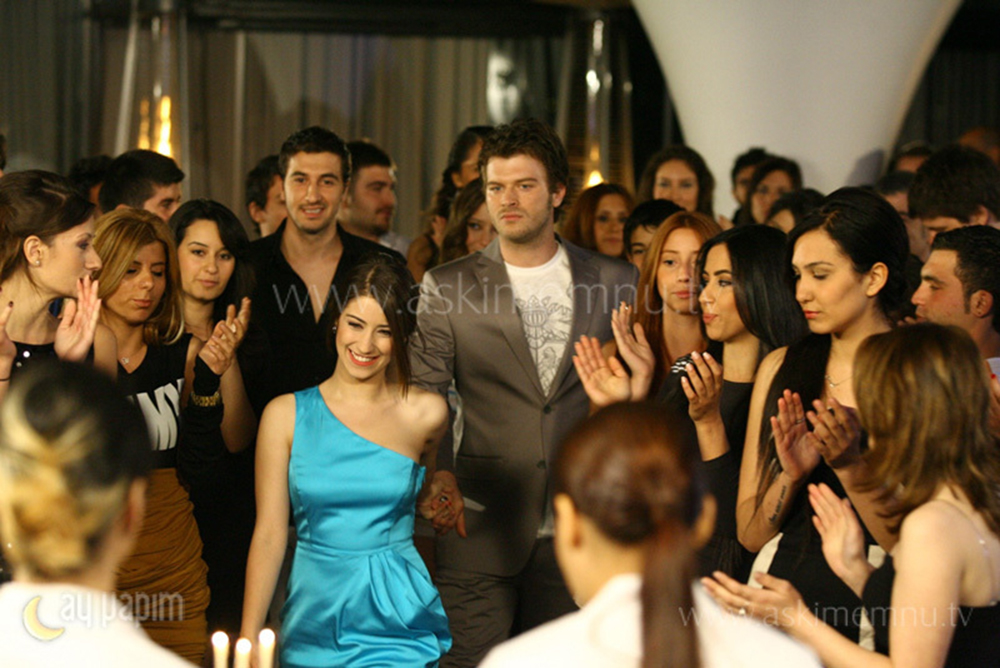
With chocolate-box views of the Bosphorus observable through the huge bay windows, we are transported into a consumerist world in which money talks, thereby proving the veracity of the claims advanced by sociologists Ergün Özbudun and E. Fuat Keyman:
[Serials celebrate] The emergence of cultural capital used by Islamic identity in terms of fashion, art […] as well as the emergence of a consumerist Islamic identity acting as an economic citizen, integrated into shopping mall culture making use of technology, and understanding the symbolic power of money (80).
“Glocalism” has been emphasized in terms of content as well as form – the emphasis on money conveys the Republic’s increasing self-confidence as a capitalist force competing in the global market, while the Dallas echoes reveal an increasing confidence in the local television industry’s potential to produce high-quality serials. On the other hand, the Yeşilçam references exist to remind viewers of the significance of the Republic’s past, with particular emphasis on preserving moral and social values. The “glocal” approach to production is not peculiar to Aşk-i-Memnu, in their introduction to their collection of essays on the global impact of the Colombian dramedy Yo soy Betty, la fea [Ugly Betty], Kim Akass and Janet McCabe describe how local executives act as intermediaries between viewers and exporters, deciding which products might be suitable for specific markets. They travel the world, exchanging ideas about formats and negotiating with global distributors and satellite platforms (11-13). When the deals have been formalized, the series can be reconfigured for local audiences. Retitled Sessiz Olmuyor (Won’t Work Without You), the Turkish adaptation relocates the action to İstanbul with familiar views of the Bosphorus on a sunny day, and shifts the attention to Arda, the Betty-character Gönül’s boyfriend, played by local pop star Emre Altuğ. Gönül would not dream of dressing in Betty’s eclectic manner; she wears the latest fashionable clothes from İstanbul haute couture. The basic love-story foregrounds the ideas of fidelity and family, reminding viewers of the importance of sustaining social cohesion (Raw, “Ugly Betty” 163-6).
The local response to these serials was shaped by changed viewing habits. In 2003 one market researcher remarked that “Turkey has the most engaged European internet audience,” a claim backed by surveys conducted by the major media conglomerates (qtd. Kejanlioğlu 2). A 2010 survey revealed that up to 77 percent of university learners depended on the internet for communication as well as academic work, and made strenuous efforts to improve their digital literacies (Şahin, Balta, and Ercan 241). Gulum Sener suggests that the internet created a new public sphere in the Republic in which viewers not only developed digital literacies but established transnational sub-groups devoted to special interests, including Aşk-i-Memnu (179-84). Staiger’s notion of “recognition talk” among fans of the series was still significant, but most exchanges took place online rather in physical communities. Fans expressed their identification in several ways: a YouTube trawl reveals numerous discussion-groups in Turkish as well as English, a series of fan-flicks based on publicity photos of the cast, not to mention every one of the seventy-nine episodes rendered available for viewing with English subtitles.
Technology can only partially account for the serial’s success. In 1985 one writer to Ien Ang (in her book about Dallas) described her identification with the serial and its characters. Although writing from a personal angle, her relationship was a social practice (29), as expressed by the admission that she “really” liked the series. Ang describes such reactions as part of an ideology of populism, as expressed by another of her correspondents: “I think Dallas is a serial for people with feelings” (33). The first respondent “invokes something like an ‘individual right of determination’ [….] ‘There’s no accounting for taste’” (33). The populist spirit enables viewers to enjoy the continuous storytelling, while providing an outlet for what might be termed guilty pleasures – the desire to set aside the daily grind of home and family and empathize with the characters’ social and material aspirations instead. In a 2010 survey covering a variety of audience tastes, Mary Lou O’Neill and Fazıl Güler make a similar point about their respondents – mostly İstanbul residents in the 18-30 age-group. In common with other serials, Aşk-i-Memnu’s emphasis on consumerism as a form of liberation inspires a belief in new plural identities combining Western with local values (232). Online communities in the 18-22 age group draw on active and digital literacies to envisage “a hybrid, creolized culture which perhaps better reflects Turkish culture that has never been singular or hermetically sealed from the outside but rather built on diversity” (236).
In an age of “glocalization,” we cannot restrict our analysis of viewer responses to Aşk-i-Memnu to the Turkish context. Those executives who bought the rights to Yo soy Betty, la fea for local adaptation also sold Aşk-i-Memnu to other territories, where it was frequently given primetime slots. A recent report claimed that the serial had been exported to over ninety countries with the most popular markets being Asia, the Middle East, and South America (“Turkish TV Series”). In a survey conducted with respondents in Egypt and Palestine, Eylem Yanardağaoğlu and Imad N. Karam invoke the term “neo-Ottoman cool” to express the Turkish serial’s popularity, a reference to the Republic’s gradual acquisition of soft power in the region (568), as well as an expression of future aspirations, especially in the war-torn territory Palestine. For one respondent Aşk-i-Memnu communicates an enduring respect for familial traditions combined with an endorsement of divergence, difference and tensions characteristic of modernity (570). Such tensions are chiefly expressed through clothes: Aşk-i-Memnu’s characters wear short skirts and high heels characteristic of the Western world, but offensive to local viewers. One woman opined: “Turkish people are nice but they are not conservative like us. They are very westernized for us” (570-1). Older respondents like the way in which the male characters respect their female counterparts, although resenting the betrayal sequences (570). In Egypt the female respondents aged between 29 and 65 liked the series’ emphasis on romance: “There is henya [compassion] which I miss in my life”; “We love to see romance and love that does not anymore exist in our lives” (571). Male respondents between the age of 15 and 24 liked the emphasis on “home, life and work” and the elegance of the characters, with settings that rendered the women “very feminine” (572). As members of societies founded on community values, most respondents liked the series’ emphasis on tradition as well as its determination to oppose immorality and foreground heterosexual love in marriage. Conversely the series’ aspirational elements provoke (mostly groundless) anxieties that Islamic values might be under threat (Salamandra 46-8).
Such comments draw our attention to the ideological and political issues underpinning transnational responses to an adaptation (Smith and Verevis 7-8). Due to the Republic’s geographical position, bridging Europe and Asia, it has always been regarded as “westernized,” especially in its approach to religion. Although this is a stereotypical view of a pluralist society, the image has been crystallized through the efforts of Mustafa Kemal Atatürk, who founded the Republic in 1923 on secular principles. In some contexts, such received wisdom attracts further ideological criticism: one Pakistani viewer claimed in a blog-post that “the Turkish soaps (like Aşk-i-Memnu) are not only a threat to the drama industry, but also to Pakistani culture. If things go like this, it won’t take too much time for Pakistani artists to go jobless” (“Turkey’s Window into Pakistan”). Another blogger from the same country felt that Aşk-i-Memnu endorsed “a bold and Western culture” comprised of “extreme emotions and fashion,” and “the beauty of actors and actresses” (Amjad). The last sentence is designed to be pejorative, as such attributes are “against Islam and unacceptable by our society.” Sequences showing families drinking wine or the anise drink rakı have “a negative effect on our society especially on youth and children” (Amjad). Politics – albeit from a more positive angle - underpins Greek opinions of the serial, which made its debut in 2010 on primetime television. Viewers enjoyed the plots so much that they discovered new insights into life among their neighbors. Learning about daily life in a (largely secular) Islamic culture, they discovered that their own ways of life were not that different (Palaiologou and Gialamas 7). If the respondents experienced complex responses towards the characters and their environment (fueled by the belief that the Republic is a tough place to live), they tried to resolve them through group discussion – whether face-to-face or online - of the characters and their motivations (Palailogou and Gialamas 9-10). The survey concluded that viewer responses to the serial genre, with its emphasis on individual interaction might be an ideal basis for improving relations between the two countries, based on transnational as well as trans-historical discussion. The serial becomes imbued with meaning beyond the text as it is inscribed in the social fabric of everyday life and thereby enhancing communicative exchange (Lomborg 58). Fulfilling this objective might seem idealistic, but it provides a means by which diverse viewer communities can appreciate their shared values as well as exploring their differences.
Although this form of exchange is much easier today, as online communication transforms the role of the audience in the adaptive event, it has continued in one form or another ever since the days when a visit to the movie theater in the Yeşilçam era would offer a comforting affirmation of community values, while providing insight into ordinary people’s struggles for survival in a hostile world. The big stars of the sixties and seventies such as Işık and Şoray offered solutions without compromising their status as role-models. Although the media environment has changed out of all recognition with the development of transnational communication (between audiences as well as media executives responsible for buying or adapting individual serials), the viewers’ “recognition talk” has if anything assumed even greater significance. Commercial and audience interests are synonymous: the future of serials such as Aşk-i-Memnu and Sessiz Olmuyor are determined not just through ratings or viewer surveys, but depend significantly on reactions from export markets.
Although Yeşilçam adaptations were adapted from Hollywood source-texts and/or formats, we should not impose value-judgements on them as somehow “inferior” to their sources. In the sixties and seventies, the adaptations fulfilled a propagandist as well as an industrial role; they increased their audience’s belief in the nation’s potential to create a popular film industry, while providing an important opportunity for directors to acquire filmmaking skills on low-budget productions that mostly made a profit. Like their B-Movie ancestors in 1930s Hollywood, directors such as Metin Erksan, Atıf Yılmaz and Halit Refiğ moved seamlessly from film to film, often clocking up at least seven per year. More recently the private television companies have borrowed popular formats (as in Dallas) and created serials of their own. Their success in the export market not only increases a sense of nationalistic pride in local products, but proves beyond doubt the possibility of transnational adaptations to by-pass the American market altogether. With buyers eagerly queuing up to buy Aşk-i-Memnu in Eastern Europe, the Middle East and Asia, there is currently little interest in selling the serial to mainstream English-speaking markets, especially when the entire run can be accessed on YouTube with subtitles. Iain Robert Smith warns us against an orientalist approach to transnational adaptation that treats Hollywood as the center and other markets as the periphery. The financial success of Turkish serials reveals how cross-cultural exchanges free from dominance enables viewers to examine more closely the process of cultural flow through which cultures borrow from and interact with one another (Meme 6).
Yet the increase in cultural flow, whether industrially or through viewer interactions, does not necessarily lead to any compromise in ideological values. Yeşilçam adapters of Hollywood classics were keen to emphasize the strength of family and community, especially during times of social and economic transformation. The family not only offered security, but could protect individuals – so long as individuals reciprocated by protecting the family. Although such beliefs should not inhibit freedom of thought and action, they encouraged viewers to guard against self-interest for the common good. The serials have perpetuated similar notions, even though their budgets are vastly superior to Yeşilçam, thereby underlining the trans-historicity of the Turkish media industry and its viewers.
Digital literacy enables viewers to discover what Paul Willemen terms a “multiplicity of discourses” arising from any given enunciation that might or might not coalesce into a unified subject: “it is the text where such discourses intersect” (78). Such discourses stimulate active literacy that enables us to “figure out in each case which pluralities are dominant enough to determine and regulate the specific force fields constructed by these [digital] interactions” (Willemen 78). These interactions take place transnationally, leading to wider reflections on issues such as what Islam represents as a religion and/or a behavioral mode, and what relationships exist between the two. Another important outcome of such exchanges is a renewed emphasis on memories, personal and collective. Aşk-i-Memnu consciously invokes Yeşilçam, while viewer memories are stimulated digitally through channels such as D Yeşilçam, offering four different Yeşilçam films per day, appealing not only to nostalgia lovers but complimenting the contemporary serials that continue to dominate Kanal D’s primetime schedules. Historically we have assumed that “personal” and “public” reminiscences are different: the one associated with individual conversations; the other with the public sphere (e.g. interviews broadcast through the media). Digital literacies have questioned that distinction – a personal anecdote on social media might go viral or enter public discourse (Pickering and Keightley 37). Nico Baumbach describes this phenomenon as the “new cinephilia” in which active and digital literacies combine to offer transnational platforms for viewer exchange (Baumbach 53). Digital literacies also prompt us to reflect critically on “adaptation” as a mode of personal as well as textual transformation. In 2015, I analyzed the theories of psychologist Jerome Bruner, whose Making Stories (2002) draws an explicit parallel between the process of adapting to new environments and new experiences and the process of rewriting texts across different media (Raw, “Psychology and Adaptation” 91). Viewers draw upon their active literacy to tell new stories about themselves either digitally or through face-to-face interaction.
Claire Monk’s Heritage Film Audiences (2011) is one of the few book-length texts to have addressed audiences and adaptation in detail. She offers valuable evidence of how British filmgoers of different ages and socio-economic backgrounds respond to selected heritage films. With the rapid advances in the range of media platforms to view and comment on all adaptations, we can rethink Monk’s insights from a transnational as well as a digital perspective, prompting critical reflection on the relationship between past and present. We need to look more carefully at audience reactions over space and time, reflecting on how viewers from different cultures and/or historical periods respond to “glocal” concerns. Through a case-study emphasizing continuities as well as changes, this article offers a way forward. Hopefully the stories told here will stimulate further research.
Endnotes
1 This is an important point. Although capitalist enterprise flourished in the postwar era, Turkish society adhered mostly to rural values. Change and development was certainly possible, but it was dependent on community agreement (Dinn and Caldwell-Harris 9-16).
2 Kemal Tahir (1910-73) was a novelist and critic, a pioneer of the so-called Turkish village novel dealing with the realities of the countryside at a time of profound socio-economic change.
3 Kanal D’s management of the televisual and digital landscape has been especially astute. They operate a satellite channel (D Yeşilçam) – also available online – whose function resembles that of TCM in the United States. Four Yeşilçam classics are shown daily, with repeats for those who miss them.
Works Cited
Aksoy, Ahu, and Kevin Robins. “Banal Transnationalism: Turkish Perspectives on Television and the Imagined Community.” Media Communities. Ed. Brigitte Hipfl, Theo Hug. 123-47. New York: Waxman Münster, 2006. Print.
Amjad, Aiman. “Popularity of Turkish Dramas.” Pakistan World 17 Feb. 2017. Web. 2 May 2017.
Altın Cocuk. Dir. Memduh Ün. Perf. Göksel Aksoy, Altın Günbay, Sevda Nur. Göksel Film, 1966. Film.
Ang, Ien. Watching Dallas: Soap Opera and the Melodramatic Imagination. London: Routledge, 1985. Print.
Aşk-i-Memnu. Dir. Halit Refiğ. Perf. Müjde Ar, Şukran Güngör, Itır Esen. TRT, 1974. Television.
------. Dir. Hilal Sanal, Mesude Eraslan. Perf. Beren Saat, Kıvanç Tatlıtuğ, Nebahat Çehre. Ay Yapım/ Kanal D, 2008-11. Television.
Baumbach, Nico. “All That Heaven Allows.” Film Comment 48.2 (Mar-Apr 2012): 47-53. Print.
Bonnie and Clyde. Dir. Arthur Penn. Perf. Warren Beatty, Faye Dunaway, Michael J. Pollard. Warner Brothers, 1967. Film.
Bruner, Jerome. Making Stories. Cambridge, MA: Harvard UP. 2002. Print.
Cemo ile Cemile. Dir. Çetin İnanç. Perf. Yılmaz Köksal, Ülkü Özen. Özen Film, 1971. Film.
Çapkın Kızlar. Dir. Temel Gürsu. Perf. Perihan Savaş, Ali Poyrazoğlu, Bülent Kayabaş. Sezer Film, 1975. Film.
Dallas. Dir. David Jacobs. Perf. Larry Hagman, Ken Kercheval, Patrick Duffy. Lorimar Productions, 1978-91. Television.
Dinn, Ayşe Ayçiçekeği, and Catherine Calder-Harris. “Individualism-collectivism among Americans, Turks, and Turkish Immigrants to the US.” International Journal of Intercultural Relations 361 (Jan. 2011): 9-16. Print.
Dönmez-Colin, Gönül. The Routledge Dictionary of Turkish Cinema. Abingdon: Routledge, 2014. Print.
“Early Cinema.” Directory of World Cinema: Turkey. Ed. Eylem Atakav. 49-66. Bristol: Intellect, 2013. Print.
Goldfinger. Dir. Guy Hamilton. Perf. Sean Connery, Honor Blackman, Shirley Eaton. Eon, 1964, Film.
Gürçağlar, Şehnaz Tahir. The Politics and Poetics of Translation in Turkey 1923-60. Amsterdam: Rodopi, 2008. Print.
İngiliz Kemal Lavrens’e Karşı. Dir. Osman F. Seden. Perf. Ayhan Işık, Muzaffer Tema, Gülistan Güzey. Kemal Film 1952, Film.
Kaya, Dilek. “Yeşilçam in Letters: A Cinema Event in 1960s Turkey from the Perspective of an Audience Discourse.” Diss. Bilkent U., Dept. of Graphic Design, 2012. Print.
Kadın Hamlet. Dir. Metin Erksan. Perf. Fatma Girik, Sevda Ferdağ, Reha Yurdakul. Uğur Film, 1976. Film.
Kejanlioğlu, Reyhan. “A Review of Research on the Public Sphere and Audience Participation in Turkey.” Transforming Audiences, Transforming Societies (2010): 1-6. Web. 29 Apr. 2017.
Lawrence. T. E. Seven Pillars of Wisdom. 1922. Ware: Wordsworth, 1999. Print.
Leitch, Thomas. Adaptation Studies and its Discontents: From Gone with the Wind to The Passion of the Christ. Baltimore: Johns Hopkins UP. 2007. Print.
Livingstone, Sonia, Christine W. Wijnen, Tao Papaioannu, Costa Conceição, Maria del Mar Grandio. “Situating Media in the Changing World.” Audience Transformation: Shifting Audience Perceptions in Late Modernity. Ed. Nico Carpentier, Kim Christian Schrader, Lawrie Hallett. 210-28. New York: Routledge, 2014. Print.
Lomborg, Stine. “Social Media as Communicative Genres.” Mediakulture 27 (2011): 55-71. Print.
McCabe, Janet, and Akass, Kim. “Introduction: ‘Oh, Betty, You Really Are Beautiful’” TV’s Betty Goes Global: From Telenovela to International Brand. 1-26. London: I. B. Tauris, 2013. Print.
Monk, Claire. Heritage Film Audiences: Period Film and Contemporary Audiences. Edinburgh: Edinburgh UP., 2011. Print.
Murray, Simone. The Adaptation Industry: The Cultural Economy of Contemporary Adaptation. New York: Routledge, 2012. Print.
O’Neill, Brian, J. Ignacio Gallego Pérez, and Franke Zeller. “New Perspectives on Audience Activity: ‘Presumption’ and Media Activism as Audience Practices.” Audience Transformations: Shifting Audience Positions in Late Modernity. Ed. Nico Carpentier, Kim Christian Schrøder and Lawrie Hallett. 157-71. New York: Routledge, 2014. Print.
O’Neill, Mary Lou, and Fazıl Güler. “Strangers to and Producers of Their Own Culture: American Popular Culture and Turkish Young People.” Comparative American Studies 8.3 (Sep. 2010): 230-43. Print.
Özbudun, Ergün, and E. Fuat Keyman. “Cultural Globalization in Turkey: Actors, Discourses, Strategies.” Many Globalizations. Ed. Peter L. Berger and Samuel Huntington. 296-320. Oxford: Oxford UP. 2002. Print.
Palaiologou, Nektaria, and Vasilis Gialamas. “Building Intercultural Bridges through TV Serials.” Journal of Ethnic and Cultural Studies 7.2 (2015): 1-10. Print.
Pickering, Michael, and Emily Keightley. “Memory, Media and Methodological Memories.” Memory in a Mediated World: Remembrance and Reconstruction. Ed. Andrea Hajek, Christine Lohmeier, and Christian Penzold. 36-55. Basingstoke: Palgrave, 2016. Print.
Raw, Laurence. “Jerome Bruner and the Transcultural Adaptation of 1970s Hollywood Classics in Turkey.” Media Across Borders: Localizing TV, Film, and Video Games. Ed. Andrea Esser, Miguel À. Bernal-Merino, and Iain Robert Smith. 141-51. New York: Routledge, 2016. Print.
------. “The Many Faces of Türkân Şoray.” Trans. Baran Germen. Exploring Turkish Cultures: Essays, Interviews, and Reviews. 260-73. Newcastle-upon-Tyne: Cambridge scholars, 2011. Print.
------. “Psychology and Adaptation: The Work of Jerome Bruner.” Linguaculture 1 (2014): 89-100. Print.
------. “T. E. Lawrence, the Turks, and the Arab Revolt in the Cinema.” Literature/Film Quarterly 33.4 (2005): 252-63. Print.
------. “Ugly Betty on Turkish Television: Updating Popular Cinema.” TV’s Betty Goes Global: From Telenovela to International Brand. 161-7. London: I. B. Tauris, 2013. Print.
Sabrina. Dir. Billy Wilder. Perf. Audrey Hepburn, Humphrey Bogart, William Holden. Paramount, 1964. Film.
Salamandra, Christa. “The Muhammad Effect: Media Panic, Melodrama, and the Arab Female Gaze.” Journal of Anthropology 85.1 (Winter 2012): 45-77. Print.
Sener, Gulum. “Internet as New Public Sphere in the Age of Global Capitalism: the Use of [the] Internet by New Social Movements.” Diss. Marmara U. Dept. of Communication, 2006. Print.
Sessiz Olmuyor. Dir. Taner Akvardar. Perf. Aslan Altın, Emre Altuğ, Durul Bazan. Kanal D, 2005-6. Television.
Smith, Iain Robert. “’Beam me Up, Ömer.’ Transnational Media Flow and the Cultural Politics of the Turkish Star Trek Remake.” Velvet Light Trap 61: 3-13. Print.
------. The Hollywood Meme: Transnational Adaptations in World Cinema. Edinburgh: Edinburgh UP., 2016. Print.
------, and Constantine Verevis, “Introduction.” Transnational Film Remakes. 1-18. Edinburgh: Edinburgh UP., 2017. Print.
Some Like It Hot. Dir. Billy Wilder. Perf. Marilyn Monroe, Tony Curtis, Jack Lemmon. Mirisch Corporation, 1959. Film.
Staiger, Janet. Media Reception Studies. New York: New York UP., 2005. E-book.
Şahin, Yaşar Güneri, Balta, Sabah, and Ercan, Tuncay. “The Use of the Internet by University Students During their Course Project Evaluation: A Case Study.” Turkish Journal of Educational Technology 9.2 (Apr. 2010): 234-44. Web. 1 May 2017.
Şoforın Kızı. Dir. Ülkü Erkalın. Perf. Ayhan Işık, Belgin Doruk, Ekrem Bora. Birsel Film, 1965. Film.
Turist Ömer Uzay Yolunda. Dir. Hulki Saner. Perf. Sadri Alışık, Erol Amaç, Cemal Sahbaz. Saner Film, 1973. Film.
“Turkey’s Window into Pakistan.” Stop Blaming Others 18 Jan. 2010. Web. 2 May 2017.
“Turkish TV Series Exported to over 90 Countries.” Yeni Şafak, 2 May 2016. Web. 1 May 2017.
Uşaklıgil, Halit Ziya. Aşk-i-Memnu. 1899. İstanbul: Özgür Yayınları, 2008. Print.
Verevis, Constantine, and Claire Perkins, ed. Film Trilogies: New Critical Approaches. Basingstoke: Palgrave, 2012. Print.
Willemen, Paul. “Notes on Subjectivity.” Looks and Fictions: Essays in Cultural Studies and Film History. 56-87. Bloomington: Indiana UP., 1994. Print.
Yanardağaoğlu, Eylem, and Imad N. Karam. “The Fever that Hit Arab Satellite Television: Audience Perceptions of Turkish TV Serials.” Identities: Global Studies of Culture and Power 20.5 (2013): 561-79. Print.
Yeşil, Bilge. Media in New Turkey: The Origins of an Authoritarian Liberal State. Urbana: U. of Illinois P., 2016. Print.
Yo soy Betty, la fea. Dir. Mario Ribero Ferreira. Perf. Ana Maria Orozco, Jorge Enrique Abello, Natalia Ramirez. RCN Television, 1999-2006. Television.
The Young and the Restless. Creators Lee Philip Bell and William J. Bell. Perf. Doug Davidson, Eric Brandon, Peter Bergman. Bell Dramatic Serial Inc., 1975-. Television.